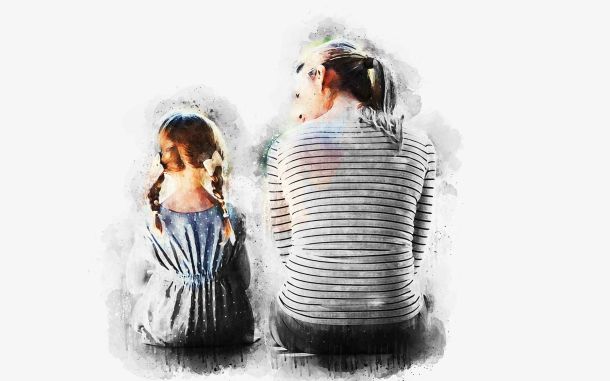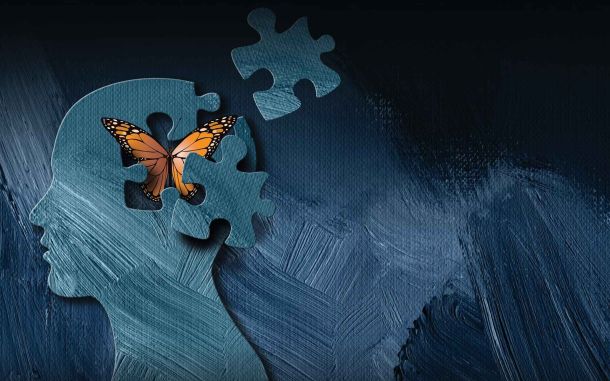The New Normal

In This Article
-
When the director of WHO declared Covid-19 as a pandemic in March 2020, many governments dictated global phyical closures of businesses and schools, and pushed all institutions to migrate to online platforms.
-
The Covid-19 pandemic has caused the largest disruption of education systems in history, affecting nearly 1.6 billion learners in more than 190 countries.
-
The Covid-19 has disproportionately affected women, particularly mothers and those in care-giver roles. Women had already spent a lot more time, compared to men, in handling domestic tasks such as laundry, grocery shopping, cleaning, and taking care of kids.
It was December 31st, 2019 when Wuhan Municipal Health Commission, China, reported a cluster of cases of pneumonia seen in Wuhan, Hubei Province. Later, we’ve learned that it was due to a new virus initially found in a seafood bazaar within the city. The virus was a type of coronavirus, a category of respiratory viruses that are known to cause severe acute respiratory syndrome, also known as SARS. (CDC, 2019). Because the original virus that is responsible for the Covid-19 Pandemic was similar to SARS-CoV it was named SARS-CoV-2 (CDC, 2019). To be precise, the virus’s name Covid-19 is an acronym of CO (corona), VI (virus), D (disease), and 19 (last two digits of the year it was found) (CDC, 2019).
Nobody in the United States where I live in, including myself, paid much attention to the news about this new coronavirus incident because we simply thought we did not need to worry about a virus that had appeared so far away from home.
However, in March 2020, the director general of World Health Organization (WHO, 2020) declared Covid-19 as a pandemic after assessment of the rapid spread and severity of the virus across the globe. The organization then warned people with additional precautions of using face mask and social distancing in public in the hopes that it might help curb the spread of the pandemic (Red Cross, 2020). This was just the beginning, and nobody had no idea about unforeseen policies and applications in peoples’ lives all over the world. Then, most governments dictated global physical closures of businesses, sport activities, schools, and pushed all institutions to migrate to online platforms (Adedoyin & Soykan, 2020). Online learning meant the use of the Internet with some other important technologies to develop materials for educational purposes, instructional delivery, and management of programs (Fry, 2001).
In the following sections, I will summarize some of my readings about the effects of COVID-19 on our lives; especially on K-12 education settings.
The new normal: Online education
According to the United Nation’s (UN) August 2020 report, the Covid-19 pandemic has caused the largest disruption of education systems in history, affecting nearly 1.6 billion learners in more than 190 countries (UN, 2020). Impacts of school closures across the world affected all children but in different degrees depending on country/region where they live, their ages, family backgrounds, gender, and such. These children were deprived from daily access to school, the basic support schools provided for them, group activities, team sports, and recreational options such as pools and playgrounds. Unfortunately, the crisis has exacerbated pre-existing educational inequalities by reducing the opportunities for many of the most vulnerable children, youth, and adults.
As a result, the education we have known and provided has changed dramatically and online e-learning, or digital learning, have become the new normal. Teaching was undertaken remotely and on digital platforms (Li, & Lalani, 2020). However, this was far from perfect and it came with some challenges associated with several benefits.
Benefits of online learning
One major silver lining that resulted from the Covid-19 pandemic is a much greater appreciation for physical schooling and the pivotal roles that teachers play in society (Vegas, & Winthrop, 2020). Indeed, as a parent I know firsthand that we struggled to work with our children at home due to school closures which led much more public recognition of the essential caretaking role schools and teachers play in. This is especially true for teachers because younger students struggle to learn from home, especially when their parents are not available to help them. This let us to multiply our gratitude for teachers, their skills, and their invaluable role in student well-being.
The pandemic has also shifted who is involved in our children’s education (Quilter-Pinner, & Ambrose, 2020). Although formal learning primarily involves students and teachers, Covid-19 has given parents some extra and daunting but much more active and important roles in their children’s education. In other words, parents are back to being their kids’ teacher again but this time there was one difference because they have literally become a teacher of their kids.
Research suggests that online teaching has helped students learn better and faster within a short time compared to education that takes place in classrooms (Li, & Lalani, 2020). This is especially true for those who have the right technology and internet. Some research has found that students retain 25-60% more material when learning online compared to only 8-10% in a traditional classroom. This is mostly due to the flexibility that it gives students in learning such as learning at their own pace, going back and re-reading, re-watching, and skipping content. These findings, and others, all indicate that the changes the pandemic brought about might be here to stay.
Cons
The pandemic has affected us all globally not only in terms of our social, economic, and political lives, but also emotionally and psychologically (Miller, 2020). For example, Jansen (2020) pointed out that, “Our biggest mistake would be to treat children as cognitive machines that can simply be switched on again after the trauma of Covid-19.” Health experts indicates that students, parents, and teachers might have been going through a great deal of anxiety and stress (Centers for Disease Control and Prevention, 2020) and transition back to normal might take longer than expected.
In online learning, learners do not have much choice on the platforms they sign up to use if they want to continue their education. User data and digital footprints are the new oil for companies in terms of marketing (Kerres, 2020), because they are being collected, analyzed and, in some cases, sold to third parties (Prinsloo, Slade, & Khalil, 2019).
In other cases, there is a need for better cyber security as user data can potentially be hacked or leaked (Davey, 2020). Safety and security while in virtual calls has also been an issue due to “bombers” that hack in and display rude or inappropriate messages (Manskar, 2020). The use of online proctoring services has also surged during the pandemic to prevent cheating and academic dishonesty, which raises some serious concerns about student privacy and test anxiety students feel as a result of being surveilled.
Digital divide
With the majority of schools closed due to Covid-19, many emergency remote education approaches have depended on access to the Internet in addition to data and devices to provide continuation of teaching and learning. This shift to online has highlighted the stark digital divide between those who have access to electricity, internet infrastructure, data, and devices and those that do not. For example, as of 2019, only 39.6% of Africans have internet access compared to 87.7% of Europeans and 95% of North Americans (Internet World Stats, 2020). Where there is access, there are further inequalities in bandwidth distribution, data prices, and internet speed, which are further shaped by socio-economic factors of gender, age, employment, educational background, neighborhood and household income (Rohs, & Ganz, 2015).
Similarly, there are also differences in access to laptops, smartphones, feature phones, TV and radios between high-, middle-, and low-income countries and populations within countries. Even when these devices are present in households there are often not enough devices to accommodate the simultaneous educational needs of multiple children, as well as parents, who may need them for remote working.
Inequity and social justice
The digital divide between communities has become more explicit and stronger with Covid-19 than ever before. The material, cultural, and geopolitical inequalities are now clearly visible through the lens of Covid-19. During the epidemic, wealthy people have been able to supply food, safely self-isolate, and purchase cleaning products, yet lower income citizens often have not had access to the same necessities. Many workers in service industries have lost their jobs due to lockdowns and have had no source of income to support their families, while others have put their lives at risk every day because they have had to work outside the home.
This has been pretty much similar for education all over the world. While high-income groups have afforded alternative means to support their kids, including but not limited to buying laptops, faster internet services, and paying for private tutoring, many low- and middle-income populations have had to suffice with whatever learning options that were provided for them. Some children did not even have access to food programs that provided them with some level of basic nourishment.
Gender issues
While shutting down schools and forcing people to do homeschooling were key to slow down the spread of Covid-19, this had some negative effects for others especially adolescent girls and women (Mutavati, Zaman, & Olajide, 2020). Many countries have reported increases in domestic and sexual violence (ibid.). For instance, a study directed in times of Ebola showed that school closures led to increased gender-based violence, teenage pregnancies, child marriage, exploitation and other forms of abuse against adolescent girls (Bandiera et al., 2019). The Global Partnership for Education (2020) warns that “the impact of Covid-19 on adolescent girls is likely to surpass that caused by the Ebola epidemic.”
In addition to domestic and sexual violence, Covid-19 has also disproportionately affected women, particularly mothers and those in care-giver roles. Women had already spent a lot more time, compared to men, in handling domestic tasks such as laundry, grocery shopping, cleaning, and taking care of kids (Medina & Lerer, 2020). This imbalance has increased exponentially during the crisis where women’s professional careers have taken the greatest hit (ibid.). What’s more, it was usually mothers who have had to take on the role of teacher in out-of-school learning, women have been asked to take time off their jobs so their husbands could continue working through Covid-19 unimpeded.
Implications
The pandemic has highlighted what skills and competencies are needed to be prepared for a crisis like Covid-19. The need for digital literacy for students, parents and teachers arose as most critical in emergency remote education.
The pandemic has also emphasized the need for educators to become familiar and trained in online pedagogies because of differences in income and constraints between online and in-person learning environments. In low- and middle-income countries, familiarity with how low-tech solutions can be used to support learning is needed for teachers. Thus, as suggested by Koehler and Mishra (2009), the need to redesign the curriculum for technological knowledge in addition to pedagogical and content knowledge was obvious and teacher professional development needs to be expanded to cover this deficiency.
Beyond the skills that are needed to survive a crisis, the pandemic has also shown us many skills that can be carried forward when we return to a new normal. The pandemic has shown the need for a pedagogy of care in addition to integrating digital teaching to their curriculum. Now more than ever before educators are thinking about their learners beyond their roles in the classroom such as the difficulties they may be facing in their personal lives. The pandemic has also reminded us one more time of the need to shift to more student-centered practices and pedagogies that emphasizes the process of learning, student experience, and engagement online.
Another lesson we can learn from this pandemic is that increased parental engagement leads to better learning outcomes. Therefore, governments should better develop programs and provide funding to strengthen the relationship between schools, parents, and their children.
Finally, for those that have been facing injustices prior to Covid-19, the hope is not to return to normal but to use this crisis as an opportunity to fix an education system that was already broken to begin with (Black, 2020).
Shortly, the Covid-19 pandemic and its effects will have lasting outcomes on educators, students, their parents and on whole country, especially on women.
Back to school
Schools returned to 100% in-person education as it was before the Covid-19 in fall 2021. Governments and school districts have taken protective measures in school settings to prevent transmission of the Covid-19 viruses including social distancing, correct use of masks, handwashing, and respiratory protocol.
The outcomes of the education with Covid needs a separate article to discuss. Now, I will briefly touch upon some of the results from most current research on our students’ learning after a year of online education.
Researchers were expecting educational disruptions caused by the pandemic in the form of weakened student learning (Kuhfeld et al., 2020; Hamilton et al., 2020). However, early results of research on student learning yielded mixed results. For example, Renaissance (2021) examined at a large sample of about 3.8 million 1st through 8th grade students who had taken their Star assessments in math or reading during the winter of the 2020-2021 school year. They compared students’ scores for those who also took fall 2019 and fall 2020 tests. Overall, they found that students’ scores rose during the first half of the 2020-2021 school year in the amount of what Renaissance (2021) would expect in a non-pandemic school year. In another research, however, Pier et al. (2021) found that California students’ learning during the Covid-19 school year caused them slower academic growth where they lost around 2.6 months in English/Language Arts and 2.5 months in math compared tp regular school years. It seems that we need more and comprehensive research to see how our students’ academic learning are affected by online education.
Qualitative research regarding students’ experiences of online learning revealed that most of the students, regardless of age, want to return to physical schools for their education (Sahin & Matteson, 2021). Younger kids are especially more interested in in-person instruction than older kids do (Sahin & Matteson, 2021). This might stem from the fact that younger students are still children and miss their friends and teachers more for socialization and fun. Similarly, high schoolers are more likely to be in hybrid or online instruction model than younger learners (Henderson et al., 2020). Clearly students missed the physical social interaction and engagement with their friends and teachers instead of being isolated at home a whole year.
References
- Adedoyin, O. B., & Soykan, E. (2020). Covid-19 pandemic and online learning: the challenges and opportunities. Interactive Learning Environments, 1-13. https://doi.org/10.1080/10494820.2020.1813180
- Bozkurt, A. et al., (2020). A global outlook to the interruption of education due to COVID-19 pandemic: Navigating in a time of uncertainty and crisis. Asian Journal of Distance Education 15(1), 1-126.
- Li, C., & Lalani, F. (2020). The COVID-19 pandemic has changed education forever. Retrieved from https://www.weforum.org/agenda/2020/04/coronavirus-education-global-covid19-online-digital-learning/
- Centers for Diesease Control and Prevention (CDC). (2020). Coping with stress. Retrieved from https://www.cdc.gov/coronavirus/2019-ncov/daily-life-coping/managing-stress-anxiety.html
- Devercelli, A. (2020). Supporting the youngest learners and their families in the COVID-19 (Coronavirus) response. World Bank. https://blogs.worldbank.org/education/supporting-youngest-learners-and-their-families-covid-19-coronavirus-response
- Henderson, M. B., Peterson, P. E., & West, M. R. (2020). Pandemic parent survey finds perverse pattern: Students are more likely to be attending school in person where covid is spreading more rapidly. Retrieved from https://www.educationnext.org/pandemic-parent-survey-finds-perverse-pattern-students-more-likely-to-be-attending-school-in-person-where-covid-is-spreading-more-rapidly/
- Sahin, A. & Matteson, S. (2021). Impact of online learning and students’ personal factors on students’ NWEA scores. Submitted for publication.
- Vegas, E., & Winthrop, R. (2020). Beyond reopening schools: How education can emerge stronger than before COVID-19. Retrieved from https://www.brookings.edu/research/beyond-reopening-schools-how-education-can-emerge-stronger-than-before-covid-19









